In the world of science, technology, and innovation, breakthroughs are often hailed as the result of relentless dedication, expertise, and deep knowledge within a specific field. However, history has shown that some of the most revolutionary discoveries and ideas emerge from individuals who do not necessarily have a background in the area they are innovating. So, why do breakthroughs often come from outside the field? What makes outsiders uniquely poised to see problems and solutions in a way insiders cannot?
This article will explore the intriguing phenomenon of breakthroughs originating from outside traditional domains of expertise, examining the psychology behind innovation, the benefits of interdisciplinary thinking, and how a fresh perspective can challenge long-standing assumptions.
The Cognitive Benefits of Being an Outsider
One of the primary reasons breakthroughs often come from those outside a particular field is cognitive flexibility. Cognitive flexibility is the brain’s ability to switch between thinking about two different concepts or to think about multiple concepts simultaneously. Experts, by virtue of their deep immersion in a specific domain, often develop a set of assumptions and mental models that guide their work. While these models can lead to significant advancements, they can also become limitations. They can prevent experts from seeing the world in new ways and inhibit creative solutions.
In contrast, those who are not experts in a field tend to have fewer preconceived notions and are not bound by the same mental models. Their thinking is not encumbered by the constraints that experts might unintentionally place on themselves. This fresh, unfiltered perspective can allow them to approach problems in innovative ways.
The Role of Cross-Pollination: Ideas from Different Disciplines
One key advantage of being an outsider is the ability to combine knowledge from different disciplines—an approach known as cross-pollination. Fields that seem unrelated at first can often inform one another in surprising ways. For example, the principles of biology have inspired breakthroughs in engineering (biomimicry), and ideas from psychology have transformed approaches to user-centered design in technology.
One striking example is Steve Jobs’ incorporation of artistic design into the development of the Apple Macintosh. Jobs famously took inspiration from the calligraphy classes he attended in college, which led him to prioritize elegant typography and design in Apple’s user interface. Jobs’ lack of formal expertise in the realm of computer engineering didn’t hinder his ability to see the importance of aesthetics in technology, a perspective that reshaped the computing world.

Cross-pollination doesn’t just happen in product design. The pharmaceutical industry, for instance, has benefited from bringing together biologists, chemists, and data scientists—individuals who might come from completely different backgrounds but whose combined knowledge leads to the development of life-saving drugs and therapies.
The Advantage of Questioning Established Norms
Often, the outside perspective can play a critical role in questioning established norms. Within a given field, professionals are trained to think within a framework of “how things have always been done.” They may develop an inherent bias toward incremental improvements and may be less inclined to question the basic assumptions underlying their work. Outsiders, however, are less likely to be tied to these assumptions and may be more willing to ask simple yet powerful questions that others overlook.
Take the example of Elon Musk’s approach to space travel with SpaceX. Musk was not a rocket scientist, yet he revolutionized the space industry by questioning assumptions about cost, materials, and the feasibility of reusable rockets. He didn’t accept the notion that space exploration had to be prohibitively expensive and inefficient. His willingness to look beyond traditional aerospace thinking led to innovations that have made space travel more accessible.
Similarly, in medicine, physicians who focus narrowly on their specialties might overlook novel ideas from areas like artificial intelligence, which could radically change diagnostics or treatment. It’s the outsiders—AI experts or data scientists—who may see how algorithms can be used to analyze medical data in ways that doctors might never have considered.
The Curse of Expertise: The “Fixation Effect”
Psychologically, one of the reasons why experts might miss breakthroughs is a cognitive bias known as the “fixation effect.” This is a tendency to focus on solutions that have worked in the past, even when they are no longer the best approach for a new problem. This bias can lock experts into a set of rigid solutions and approaches, leading to the “not invented here” syndrome—a situation where individuals or organizations fail to consider new or outside ideas because they are too focused on their own internal solutions.
The fixation effect is particularly relevant in the corporate world. Large companies often rely on their well-established models and product lines, which can hinder radical innovation. Smaller startups or individuals from outside the field, however, can more easily take risks, as they have no legacy systems to protect or entrenched expectations to meet.
The Power of Interdisciplinary Education
One possible antidote to the narrowing focus of expertise is interdisciplinary education. By studying multiple fields, individuals can develop a more holistic view of problems and potential solutions. Interdisciplinary training encourages individuals to think outside traditional boundaries, equipping them with tools to tackle challenges in innovative ways.
Consider the development of the internet itself, which was not the result of one discipline but rather the convergence of ideas from various fields, including computer science, engineering, telecommunications, and even social sciences. The internet’s evolution was not driven by a single group of experts in a specific area; it was a product of collaboration across many domains, and the result has had a profound impact on every sector of society.
This broad-based, interdisciplinary approach to education and problem-solving is increasingly valued in today’s world. Fields such as bioinformatics, quantum computing, and environmental science all require knowledge from multiple disciplines. The next generation of groundbreaking ideas may come from professionals who see the intersections between, for instance, artificial intelligence, sustainability, and ethics.
How Outsiders Can Challenge Status Quo Thinking
In many ways, outsiders serve as an antidote to the stagnation that can sometimes occur in a field that is too insular. Consider the story of the Wright brothers, who succeeded in building and flying the first successful airplane despite having no formal training in aviation or engineering. The Wright brothers had been bicycle mechanics, not aeronautical engineers, and yet their outside perspective helped them identify problems that aviation experts at the time missed.

The Wright brothers didn’t subscribe to the belief that flight was a matter of simply building larger, more powerful engines. Instead, they focused on understanding the aerodynamics of flight, including concepts like wing shape and control surfaces, which had been overlooked by those more focused on brute force.
This iconoclastic approach is a hallmark of outsider-driven breakthroughs. It’s often outsiders who are more willing to challenge the assumptions that have become entrenched in a particular field. This ability to challenge the status quo is crucial in industries that become comfortable with incremental advancements rather than paradigm-shifting innovations.
The Courage to Fail and Experiment
Another reason why outsiders are often the catalysts for breakthroughs is their willingness to fail and experiment without fear of reputational damage. Experts in a field are often more risk-averse, as their credibility is tied to their track record and their professional standing within the community. Outsiders, however, may not have the same stakes in maintaining a perfect record, allowing them the freedom to experiment, make mistakes, and learn from them.
This willingness to fail is particularly important in fields like tech and pharmaceuticals, where radical innovation often involves trial and error. Outsiders can afford to take more creative risks, potentially opening the door to groundbreaking discoveries. In contrast, insiders may hesitate to pursue ideas that seem too radical or out of left field.
The Role of Technology in Bridging Gaps
In today’s interconnected world, technology has made it easier for outsiders to contribute to fields that were once closed off to them. Platforms like online courses, collaborative research networks, and open-source software allow individuals from diverse backgrounds to access knowledge and tools that were once exclusive to experts in specific domains. The barrier to entry is lower than ever before, and this democratization of knowledge has enabled breakthroughs to occur more frequently outside the traditional confines of specific fields.
The advent of machine learning and artificial intelligence, for example, has enabled a wider range of people—including those without formal training in these fields—to contribute innovative ideas. Hackathons, citizen science projects, and open-source initiatives have all made it easier for individuals outside traditional academic or professional spaces to make significant contributions to the advancement of science and technology.
Conclusion: Embracing Outsiders for Future Breakthroughs
The emergence of groundbreaking innovations from outside a given field is not just a coincidence. It’s a reflection of the power of fresh perspectives, cognitive flexibility, and the ability to break free from conventional thinking. Outsiders bring a unique combination of curiosity, risk tolerance, and interdisciplinary knowledge that allows them to ask questions, challenge assumptions, and propose novel solutions.
As industries continue to evolve in an increasingly complex and interconnected world, the ability to think outside the box—and to encourage and embrace outsiders—will be one of the key factors driving future breakthroughs. Whether it’s in medicine, technology, or the arts, innovation will continue to be fueled by those willing to cross boundaries and see beyond the limitations of a single discipline.




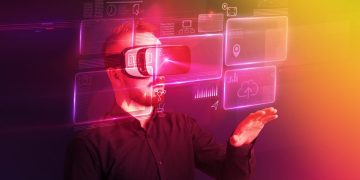












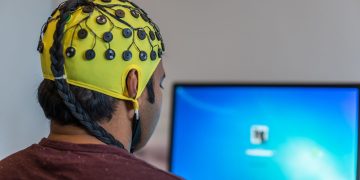

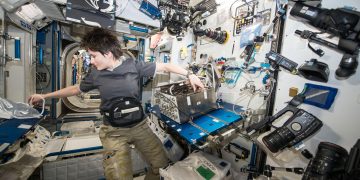





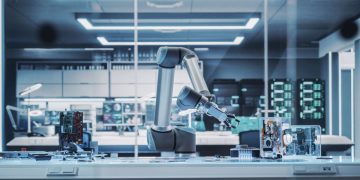








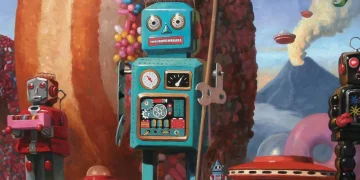















Discussion about this post